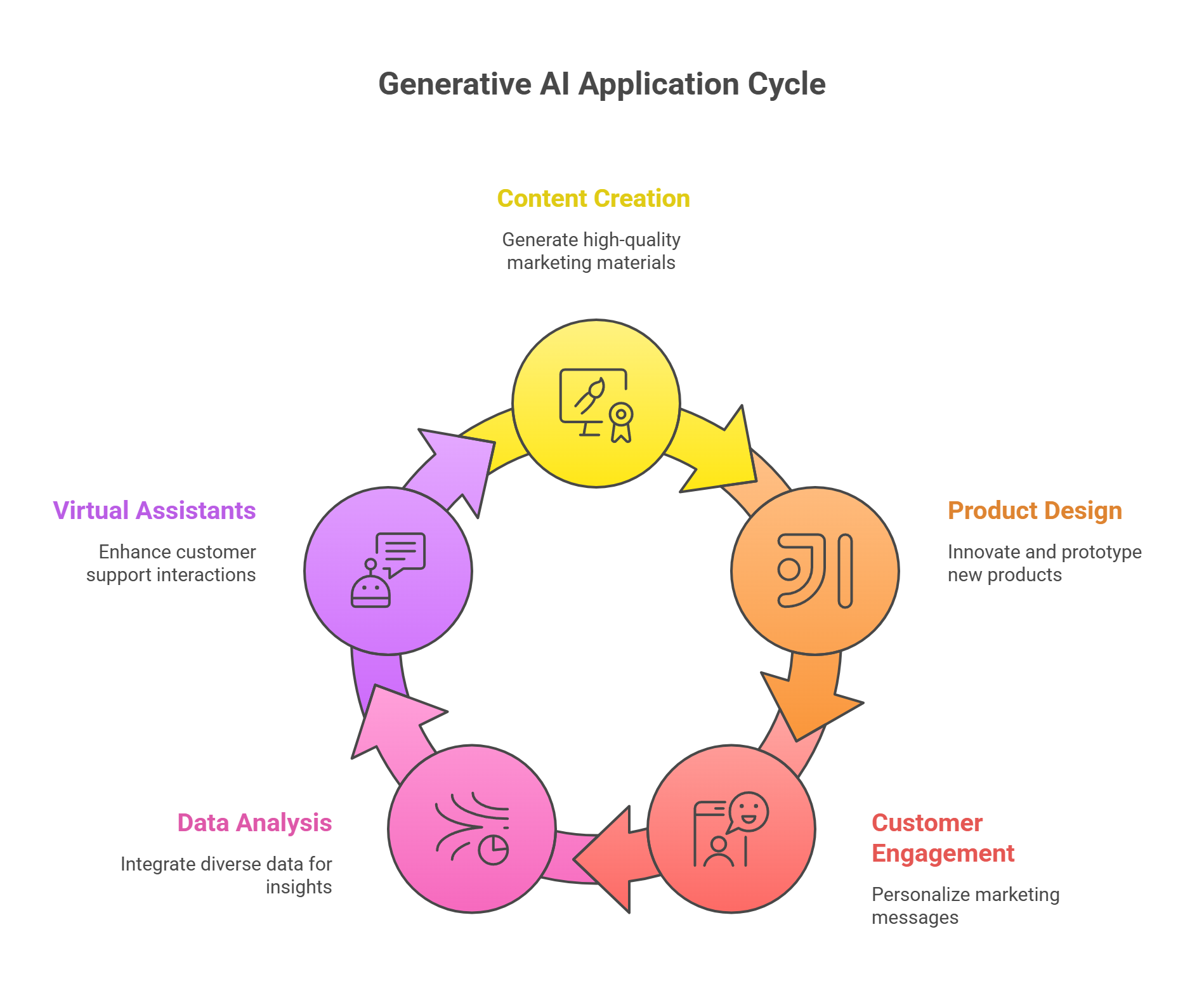
❅
❅
❅
❅
❅
❅
❅
❅
❅
❅
❅
❅
❅
❅
❅
❅
❅
❅
❅
❅
❅
❅
❅
❅
❅
❅
❅
❅
❅
❅
❅
❅
❅
❅
❅
❅
❅
❅
❅
❅
❅
❅
❅
❅
❅
❅
❅
❅
❅
❅
❅
❅
❅
❅
❅
❅
❅
❅
❅
❅
❅
❅
❅
❅
❅
❅
❅
❅
❅
❅
❅
❅
❅
❅
❅
❅
❅
❅
❅
❅
❅
❅
❅
❅
❅
❅
❅
❅
❅
❅
❅
❅
❅
❅
❅
❅
❅
❅
❅
❅
❅
❅
❅
❅
❅
❅
❅
❅
❅
❅
❅
❅
❅
❅
❅
❅
❅
❅
❅
❅
❅
❅
❅
❅
❅
❅
❅
❅
❅
❅
❅
❅
❅
❅
❅
❅
❅
❅
❅
❅
❅
❅
❅
❅
❅
❅
❅
❅
❅
❅
❅
❅
❅
❅
❅
❅
❅
❅
❅
❅
❅
❅
❅
❅
❅
❅
❅
❅
❅
❅
❅
❅
❅
❅
❅
❅
❅
❅
❅
❅
❅
❅
❅
❅
❅
❅
❅
❅
❅
❅
❅
❅
❅
❅
❅
❅
❅
❅
❅
❅
Introduction to AI Business Transformation with Multimodal Generative AI
In today's digital world, in which everything is so fast-paced, businesses are adopting new technologies such as Multimodal Generative AI to stay competitive and drive AI transformation across their operations. It is an advanced method that integrates multipronged data types such as text, images, audio, etc., to generate content based on contextual relevancy. Generative AI, therefore, enables organizations to offer more entertaining experiences to their customers, foster greater engagement, and assist in functional automation while using affordable AI, generative AI for business, and a business automation solution.
The relevancy of Multimodal Generative AI is derived from its nature in initiating business change. Apart from fostering new ideas, the undefineda class="code-link" href="https://www.seaflux.tech/blogs/generative-ai-data-engineering-automation-security" target="_blank"undefinedGenerative AIundefined/aundefined facilitates the actual process of developing content, allowing teams to develop ideas and work on high-impact areas. As the demands for individualization and innovation increase, businesses benefit from the technology by increasing their efficiency and deploying resources more effectively. This shift also reflects a broader trend in the future of AI in business, where adaptive and intelligent technologies are driving strategic growth and automation, forming a critical pillar of AI business transformation initiatives.
What is Multimodal Generative AI? A Key to AI Digital Transformation
Multimodal Generative AI is an artificial intelligence technology able to consider and produce data of several types, including text, images, and audio. While conventional AI models act generally on one modality, the multimodal AI combines these types so as to produce richer and context-specific outputs.
The major difference between multimodal AI and conventional systems lies in the processing of data. Traditional AI deals with a single type of data at a time, thereby limiting its understanding. On the other hand, multimodal AI combines information from more than one source into a single synthesis.
Key Differences from Traditional AI:
Traditional AI | Multimodal Generative AI |
Focuses on a single data type | Integrates multiple data types |
Limited contextual understanding | Offers richer, cross-modal insights |
Single-modality output | Cohesive and adaptive content creation |
Notable Examples:
- DALL·E – Generates high-quality images from text prompts.
- CLIP – Connects images and text using paired data for improved relevance.
- Whisper – Transcribes and translates spoken language into text.
These instances demonstrate how generative models utilize multimodal and data integration AI strengths to boost creativity and revolutionize industries.
Essential Elements Driving Multimodal Generative AI in AI Digital Transformation
1. Data Integration AI: Data integration is the process of integrating various data types, for example, text, images, and audio, into one source of input for multimodal generative AI. Data integration boosts the model's capacity to generate more content-rich outputs and comprehend complex relationships among modalities.
2. Model Architecture: The model architecture in multimodal AI usually utilizes sophisticated neural networks such as transformers and CNNs. These architectures incorporate attention mechanisms that help prioritize relevant inputs, allowing the model to concentrate on the necessary information while generating the output.
3. Training Methodologies: Effective AI training techniques are vital for robust multimodal models. Training involves large datasets with paired examples from different modalities.Methods such as transfer learning and reinforcement learning improve the model's flexibility and performance.
With emphasis on these elements, companies are able to tap into multimodal generative AI power to fuel innovation and enhance results.
Top Generative AI Applications in Business Using Multimodal AI
1. Content Creation: Multimodal generative AI marketing materials, blogs, and social media posts allow an almost immediate generation of high-quality content while maintaining brand equity.
2. Product Design: AI generates visuals and prototypes from inputs obtained from the product design workflow and fosters innovation for products that hit well in the market.
3. Customer Engagement: Customer engagement is better with personalized marketing using AI content to construct business messages suited for customers, which boosts satisfaction and loyalty.
4. Data Analysis: In Data Analysis, Multimodal Generative AI and Data Integration AI integrate data of diverse types to produce insights that help the business discover patterns and make appropriate decisions.
5. Virtual Assistants and Chatbots: Technology for customer support is facilitated by speech, visual, and text comprehension to enable human-like conversations and interactions.
Utilizing AI across content development, product development, customer interactions, and analytics allows companies to innovate, accelerate AI digital transformation, and stay ahead of the game. These generative AI applications demonstrate how businesses can strategically implement the technology, especially generative AI for business, to gain a competitive edge and lead in the era of AI transformation.
Key Benefits of Multimodal Generative AI for AI Business Transformation
- Creative and Innovation Boost: Because multimodal generative AI produces diverse content, it inspires new ideas and methods and, in doing so, helps brands carve out their own identities.
- Efficiency and Productivity Gains: The repetitive work is getting done now by the AI, leaving employees free to engage in high-value work and, in caring for that way, increasing their productivity.
- Cutting Costs for Creating Content and Data Analysis: Generative AI can cut down costs by speeding up the production of content, making it cheap and also helping in data analysis optimization.
- Enhanced Customer Experience Through Personalization: The multimodal AI generates content geared toward the consumer data, fostering personalized customer experiences and thus improving customer satisfaction and loyalty.
By using generative AI for creativity, efficiency, cost reduction, and personalization, a business can truly grow and innovate. These generative AI applications, including generative AI for business, are proving essential in modern business automation strategies.
Case Studies Highlighting the Impact of Multimodal Generative AI in Business
- OpenAI and DALL-E: OpenAI's DALL-E lets users create images from text, assisting an advertising organization to raise social media engagement with the aid of 30%, showcasing a sturdy ROI.
- Netflix and Content Recommendation: Netflix makes use of AI to customize tips, leading to a 15% boom in user engagement and higher subscription renewals, demonstrating AI's effectiveness.
- Adobe and Creative Cloud: Adobe's Creative Cloud integrates AI via Sensei, allowing a layout corporation to cut project turnaround time with the aid of 40%, resulting in more tasks and expanded revenue.
Business owners need to discover the possibilities that statistics integration, AI, and multimodal generative AI, in conjunction with business automation answers, gift. Embracing this era can result in full-size upgrades in approaches and consumer delight. Unlock new avenues for fulfillment by leveraging multimodal AI these days.
Challenges and Considerations in AI Business Transformation
While the benefits are significant, businesses must also address some key challenges:
- Data Privacy and Compliance
- Ensure data used across modalities complies with GDPR, HIPAA, or other regulations.
- Model Bias
- Diverse datasets are crucial to avoiding cultural, gender, or racial bias in generated outputs.
- Computational Costs
- Multimodal models often require significant computing resources, impacting scalability for smaller businesses.
- Interpretability
- Complex architectures can make it harder to understand AI decisions, requiring explainability tools.
- Change Management
- Successful adoption involves training teams and aligning workflows with AI integration.
Future Outlook: What’s Next for Multimodal AI?
- Real-time Multimodal Interaction: AI that understands and responds to live inputs from text, audio, video, and gestures.
- Autonomous Agents: AI agents that use multimodal reasoning to execute complex tasks across tools and platforms.
- Cross-Industry Adoption: Healthcare, legal, fintech, education, and logistics will see tailored use cases grow in the coming years.
End Note
Multimodal generative AI has the potential to revolutionize businesses in all sectors by merging data types such as text, images, and audio, becoming a key enabler of AI transformation at scale. Multimodal systems improve creativity, productivity, and customer interactions, enabling businesses to automate content generation and deliver personalized experiences to remain competitive. It plays a critical role in shaping the future of AI in business, offering intelligent, context-aware solutions that redefine how companies operate, create, and engage. As organizations embrace AI business transformation, multimodal generative AI stands at the forefront of innovation and operational excellence.
Let’s Build the Future with AI Together
At Seaflux, we’re passionate about AI and Machine Learning, especially in the area of Multimodal Generative AI. As a leading undefineda class="code-link" href="https://www.seaflux.tech/ai-machine-learning-development-services" target="_blank"undefinedAI app development companyundefined/aundefined and custom AI development company, we help businesses harness the power of artificial intelligence to drive innovation and efficiency.
Whether you're looking for AI development services, undefineda class="code-link" href="https://www.seaflux.tech/custom-software-development" target="_blank"undefinedcustom software development servicesundefined/aundefined, or tailored AI solutions to transform your business, we’ve got you covered. As an experienced AI solutions provider, we work closely with you to create intelligent, scalable, and impactful systems that align with your goals.
Have a project in mind? Let’s talk! undefineda class="code-link" href="https://calendly.com/seaflux/meeting?month=2024-09" target="_blank"undefinedBook a meeting with usundefined/aundefined today and discover how our expertise in AI can support your next big idea.

Krunal Bhimani
Business Development Executive









